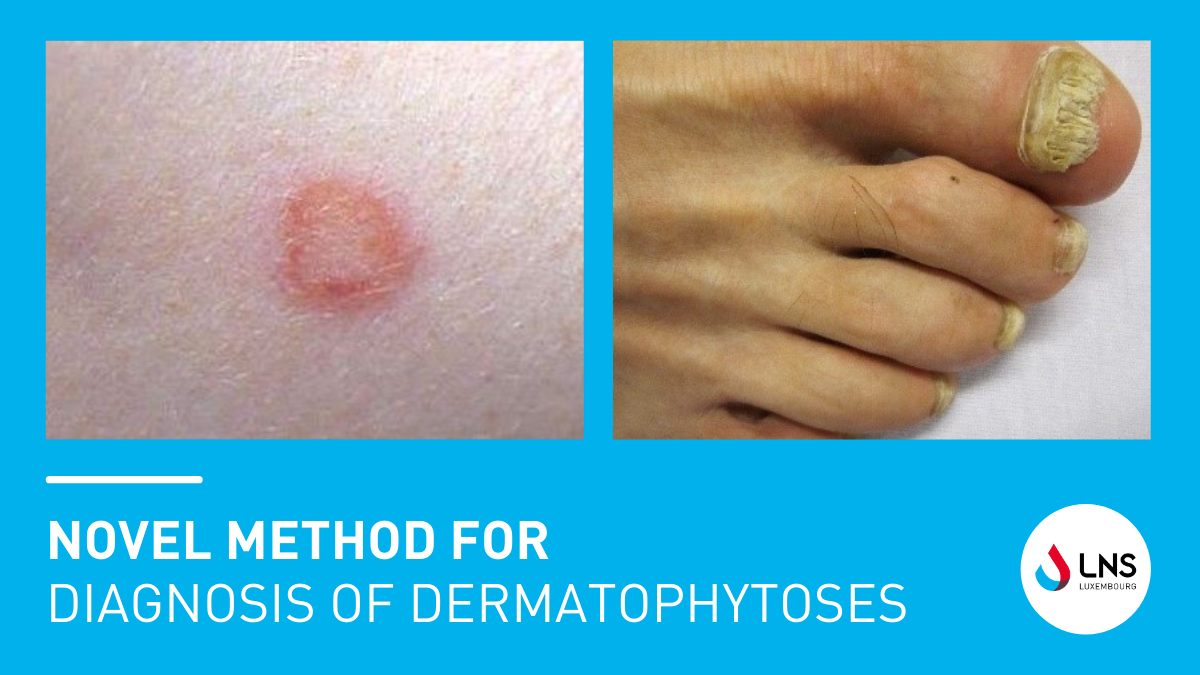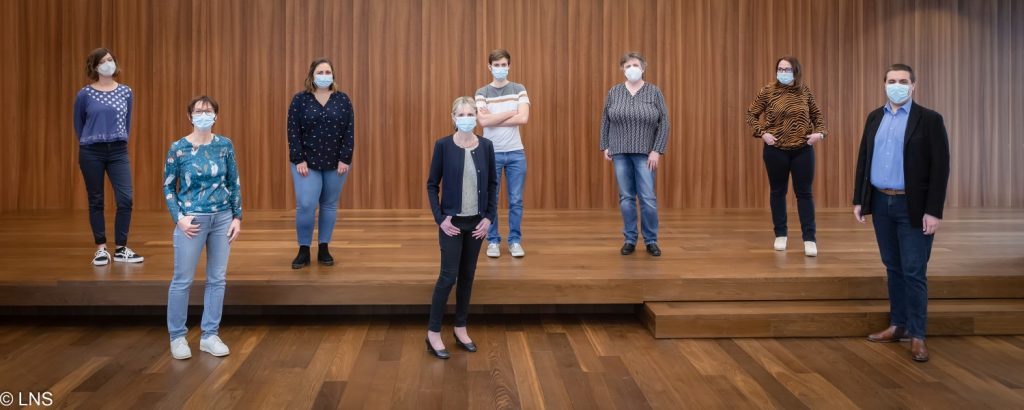- The Laboratory
- Organization
- Departments
- Jobs
- Analysis book
- Contact
- News
- Publications
- Download



Despite COVID-19, the Laboratoire national de santé (LNS) has consistently continued with its efforts to improve its services across its entire spectrum of activities. In the field of fungal diseases for instance, the team of the microbiology department’s bacteriology-mycology service, led by Dr Monique Perrin, has developed a new molecular diagnostic method for the rapid and accurate diagnosis of dermatophyte infections. An article has now been published in the Journal of Microbiological Methods (https://doi.org/10.1016/j.mimet.2021.106229).
Dermatophytes cause fungal infections of the skin and nails that are particularly difficult to treat. Three fungi –Trichophyton, Epidermophyton and Microsporum, mainly cause them. Trichophyton rubrum is the most prevalent. While traditional diagnostic methods rely on cultures and microscopy, Dr Perrin, together with Dr Alexandre Mzabi and their team, have developed an “in-house” duplex PCR (polymerase chain reaction) method. This method, which is now routinely used at the LNS, has also been accredited there in accordance with ISO 15189.
Relevant topic for patients and healthcare systems worldwide
The method presented in detail in the article enables the LNS to simultaneously detect all dermatophytes, and identify Trichophyton rubrum specifically. Dr Mzabi comments: “Preanalytical factors, specifically the DNA extraction step, are critical for the sensitivity of molecular fungus detection. This is why we successfully optimised the DNA extraction from specimens of interest, such as skin and nail scrapings, nail clippings and hair, to maximize the DNA yield. The duplex PCR method we have developed is specific and more sensitive to fungal pathogens than the traditional culture and microscopy methods.”
With this new diagnostic method, the LNS has succeeded in addressing a type of infection that has a significant impact. According to LNS Director Prof. Dr Friedrich Mühlschlegel, “fungal infections of the skin are amongst the most prevalent skin diseases globally. Worldwide, the highest rates can be found in developing nations and those most affected in the latter are children aged one to five years. Furthermore, figures from the USA show that fungal diseases there alone cost the health system around 7 billion US dollars per year, of which around 800 million dollars are spent on outpatient treatment of infections caused by dermatophytes. In Europe, the situation is no different, and this shows that the LNS has once again been able to make a contribution of high relevance that also benefits patients and healthcare systems here in Luxembourg.”
